 Mosley MINI-32-A antenna test: assembly, failure, repair, measurements and start of HF5L/p in IARU SSB R1 Fieldday 2019 contest
Mosley MINI-32-A antenna test: assembly, failure, repair, measurements and start of HF5L/p in IARU SSB R1 Fieldday 2019 contest
Field work, e.g. FieldDay contests – is a great opportunity to check in practice the suitability, strength and equipment parameters. We have made some test for the Mosley MINI-32-A antenna.
Why did we choose this antenna? Because it is well suited for field work:
- small size – after folding it fits in a 14 x 14 x 185 cm box;
- light, weighs only 4.3 kg;
- easy to install;
- works on three higher bands usually used in contests: 20, 15 and 10 meters.
The manufacturer gives the following parameters for the antenna:
- maximum SSB power: 1000 W;
- antenna gain: 3.3 dBd / 20 m, 4.5 dBd / 15 m and 5.1 dBd / 10 m;
- front to back ratio, average: 17 dB on all bands;
- maximum element length: 6 m;
- turning radius: 3.14 m.
We placed the antenna on a telescopic mast at a height of about 8.5 meters, because this height seems to be optimal for a 20-meter band due to its single-leaf characteristic, which is discussed in a separate article about the properties of the dipole above the ground.
The antenna is lightweight and has compact dimensions, so to turn it, a cheap and light TV antennas rotator from Conrad was enough. Unfortunately it is currently not available for sale anymore.
Installation of the antenna is simple and does not cause problems. We made tuning tests of the antenna by sliding the arms to various depths, but for SSB operation it turned out that the arms should be inserted to the maximum possible depth. For practical reasons, we used the DIAMOND BU-50 current balun instead of the coaxial cable recommended by the factory, which reduced the size of this part and allowed easy connection of the power cable.
However, the antenna turned out to be very delicate mechanically. The problem is the insufficient mechanical strenght of the insulator in the middle of the vibrator, whose entire weight of the arm structure is carried by a small textolite tube. As it turned out, with insufficient resistance to breaking, additionally weakened by a large mounting hole. The fracture was directly caused by the shock caused by the unexpected mast lowering during lifting, but similar effects can be caused by strong wind or even rotator operation. The manufacturer should think about strengthening this element of the antenna.
The antenna has been repaired by applying a section of plastic water pipe on the vibrator with an inside diameter matched to the outside diameter of the middle of the vibrator. The support tube has been bolted to the vibrator arms to form a rigid structure.
Using a precision antenna analyzer MAX-6, we measured the parameters of the fixed antenna, which confirmed its proper operation. The measured characteristics are given below.
The antenna worked well and efficiently during the IARU SSB R1 Fieldday 2019 contest, providing a signal strength of 2..3 S more compared to a vertical antenna with a 12 m vibrator and a GC-3000 matching box.
Below is a short video from tests, a few photos and antenna SWR charts for all 3 bands.
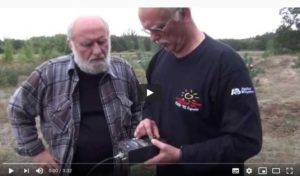
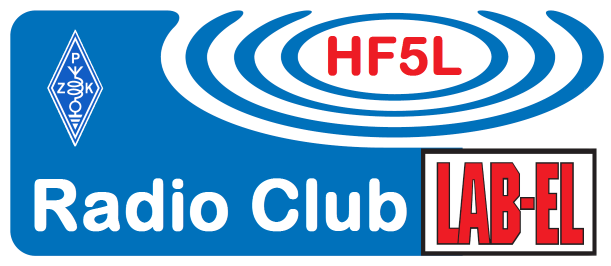

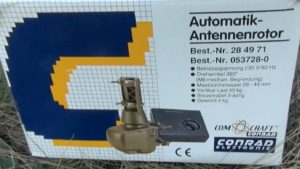
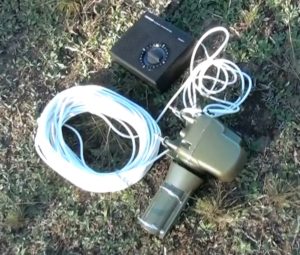
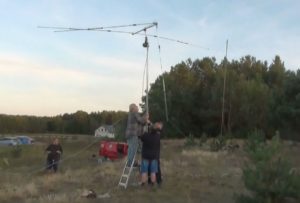
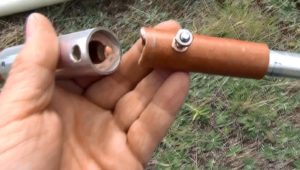
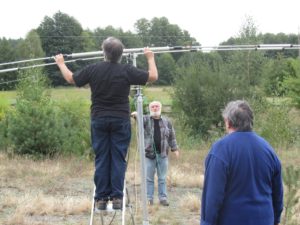
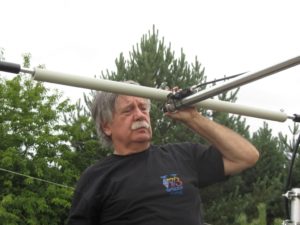
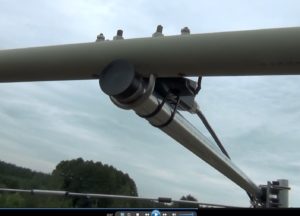
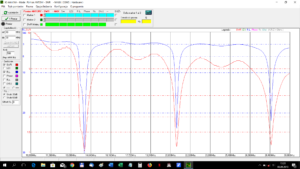
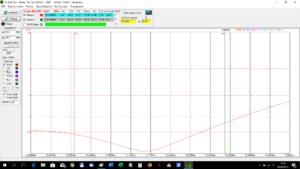
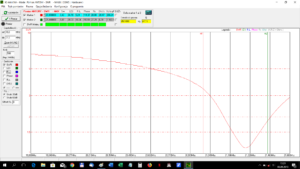
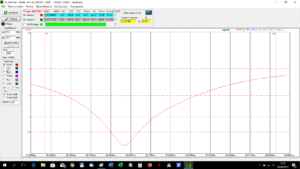
Number of Comments: 3
Thanks for the info. my color code missing on the elements how can id, which end goes
toward boom
blue color code lost on element is their any other way to check which end goes toward boom
Thanks 73
w4msp
marshall
what balun are you using mounted at feed point?